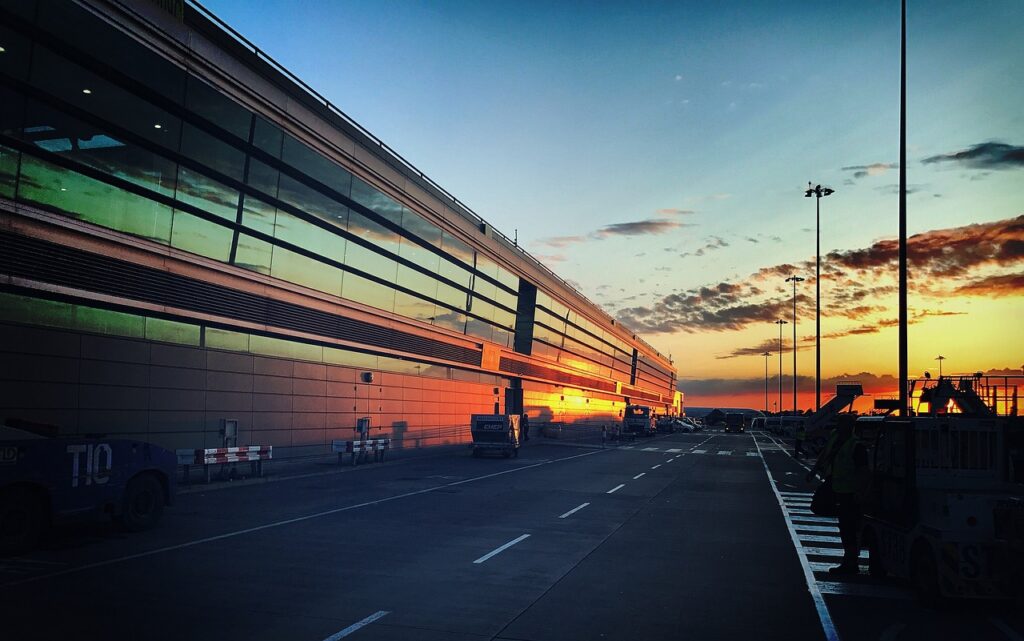Transportation In Ireland


There are several ways to travel in Ireland, including by car, bus, train, and plane.
BY CAR
Traveling by car in Ireland is a fantastic way to experience the country’s unique blend of stunning landscapes, charming villages, and hidden historical sites at your own pace. From the rugged beauty of the Wild Atlantic Way to the serene rolling hills of the Boyne Valley, having a car offers the freedom to explore both popular tourist destinations and off-the-beaten-path gems. While Ireland’s scenic routes are generally well-maintained, drivers should be prepared for narrow, winding roads, especially in rural areas. With breathtaking views at nearly every turn, road-tripping in Ireland provides an immersive and memorable adventure for travelers looking to truly connect with the island’s natural and cultural treasures.
Handy Tips:
- Drive on the left side of the road.
- Seat belts are mandatory.
- Speed limits are in km/h.
- Drink driving is illegal.
- Roundabouts are common, give way to traffic on the right.
- Many narrow roads and bridges, take care when driving.
- Have an international driver’s license if not from EU.
- Insurance, registration, and regular vehicle maintenance is required.
- Take note of road signs and traffic regulations.
- Use of mobile phones while driving is prohibited.
BY BUS
Traveling by bus in Ireland offers an easy, affordable, and scenic way to explore the island’s captivating destinations, from bustling cities to quaint coastal towns. Ireland’s extensive bus network connects travelers to major cities, as well as smaller, picturesque villages that dot the countryside, providing a stress-free alternative to driving on the country’s famously narrow and winding roads. With routes covering both tourist hotspots and lesser-known spots, bus travel is a practical option for solo travelers, families, and groups alike. Whether you’re looking to visit Ireland’s historical landmarks, take in breathtaking coastal views, or enjoy the lively atmosphere of Irish towns, the bus allows you to take in the scenery while leaving the navigation to someone else.
Handy Tips:
- Plan your journey: Use websites like Expressway.ie or Dublinbus.ie to plan your route and check the schedule.
- Buy a ticket: You can buy a bus ticket onboard or in advance from the bus driver, at a ticket office or online.
- Have correct change: Many buses do not accept card payments, so it’s a good idea to carry correct change in cash.
- Check baggage limit: Bus companies in Ireland have different baggage allowances, so make sure to check this before boarding.
- Know your stop: Make sure to ask the bus driver or check the bus stop announcement to know when your stop is coming up.
- Be mindful of peak times: Buses can be busy during peak hours, so plan accordingly and arrive at the bus stop early.
- Respect local customs: Observe local customs and be mindful of other passengers on the bus, such as giving up your seat to elderly or disabled passengers.
Helpful Resources:
Bus Éireann – Website: https://www.buseireann.ie
National bus operator offering intercity and regional bus services across Ireland.
Dublin Bus – Website: https://www.dublinbus.ie
The primary public bus service in Dublin and its surrounding areas.
Go-Ahead Ireland – Website: https://www.goaheadireland.ie
A private company that operates certain bus routes in Dublin and surrounding areas, contracted by TFI.
Aircoach – Website: https://www.aircoach.ie
Provides coach services between Dublin city, Dublin Airport, and other cities in Ireland.
BY TRAIN
Traveling by train in Ireland is one of the most scenic and convenient ways to experience the country’s natural beauty and historic landmarks. Ireland’s rail network connects major cities like Dublin, Cork, Galway, and Belfast, as well as numerous smaller towns, offering travelers a comfortable and relaxed way to journey through the island. With panoramic views of lush green landscapes, coastal cliffs, and rolling countryside, train travel allows you to take in the scenery without the hassle of navigating roads. Irish Rail (Iarnród Éireann) and the Enterprise (connecting Dublin and Belfast) provide reliable services with frequent departures, making it an ideal option for visitors looking to explore Ireland’s charms at a leisurely pace.
Handy Tips:
- Book tickets in advance to secure a seat and avoid paying higher prices.
- Check the schedule ahead of time and plan for any potential disruptions.
- Familiarize yourself with the train station, including platform information.
- Pack light and bring only what you need for the journey.
- Purchase refreshments before boarding as food and drinks on trains can be expensive.
- Have proper identification ready, as tickets are checked regularly.
- Use the luggage storage facilities if needed, keeping valuable items with you.
- Take advantage of Wi-Fi and charging ports on board.
- Respect fellow passengers and avoid loud conversations or phone usage.
- Plan your disembarkation, know the location of your destination and how to get there.
Helpful Resources:
Iarnród Éireann (Irish Rail) – Website: https://www.irishrail.ie
The national railway operator, providing intercity, commuter, and freight rail services.
Luas (Dublin Light Rail) – Website: https://www.luas.ie
Dublin’s tram/light rail system, operating two main lines across the city.
BY PLANE
The main airport in Ireland is Dublin Airport (DUB). Other significant airports include Cork Airport (ORK), Shannon Airport (SNN), and Knock Airport (NOC). Airlines that operate in Ireland include Aer Lingus, Ryanair, and easyJet, among others. These airlines offer both domestic and international flights. When traveling by plane in Ireland, it’s recommended to book flights in advance, arrive at the airport well before your flight’s departure time, and bring a valid form of identification (such as a passport).
Handy Tips:
- Book in advance: Book your flights early to get the best deals and ensure you have a seat.
- Arrive early: Arrive at the airport at least two hours before your flight to allow time for check-in, security, and baggage handling.
- ID requirements: Bring a valid form of identification such as a passport, especially for international flights.
- Familiarize with airport security: Be familiar with the airport’s security and baggage policies to avoid any delays.
- Pack smart: Pack only what you need and follow the airline’s baggage restrictions to avoid paying extra fees.
- Get travel insurance: Purchase travel insurance to protect yourself against unexpected events such as flight cancellations or lost luggage.
- Use public transportation: Use public transportation, such as buses and trains, to reach the airport and save on parking costs.
- Stay informed: Stay informed about flight status and any changes by checking the airline’s website or contacting customer service.
- Relax: Relax, stay calm, and enjoy your flight!
Helpful Resources:
Aer Lingus – Website: https://www.aerlingus.com
Aer Lingus is Ireland’s national airline, offering domestic and international flights to destinations across Europe, North America, and beyond. Known for its reliable service and Irish hospitality, Aer Lingus provides both economy and business class options, with convenient connections for travelers looking to explore Ireland or travel abroad.
Ryanair – Website: https://www.ryanair.com
Ryanair is a low-cost airline based in Ireland, offering a vast network of flights across Europe and some destinations in North Africa. Known for its budget-friendly fares, Ryanair operates from major cities and regional airports, making it a popular choice for travelers seeking affordable flights with no-frills service.
BY BICYCLE
Traveling by bicycle in Ireland offers a uniquely immersive way to explore the countryside, coastlines, and charming villages. With a mix of rural trails, scenic coastal routes, and designated greenways, Ireland is well-suited for cyclists of all experience levels. From the Great Western Greenway in Mayo to the Waterford Greenway, dedicated cycling paths let you take in sweeping views away from road traffic. Ireland’s relatively compact size and varied landscapes make cycling both a feasible and rewarding option for those seeking adventure, a sustainable travel mode, and a chance to see the island up close and at a relaxed pace.
Handy Tips:
- Choose the right route: Ireland has several scenic cycling routes, such as the Wild Atlantic Way and the Greenway.
- Plan your accommodation: There are many Bed and Breakfasts, hostels, and campsites that cater to cyclists in Ireland.
- Pack appropriately: A waterproof jacket and pants, a helmet, and comfortable clothing suitable for layering are essential items.
- Prepare for the weather: Ireland’s weather can be unpredictable, so it’s important to be prepared for rain, wind, and cold temperatures.
- Be aware of road conditions: Ireland’s roads can be narrow and winding, so it’s important to be cautious when cycling.
- Take necessary safety precautions: Always wear a helmet, carry a repair kit, and bring a map or GPS device.
- Respect local communities: Follow traffic laws and be respectful of local residents and wildlife.
Helpful Resources:
Cycling Ireland – Website: https://www.cyclingireland.ie
Cycling Ireland is the governing body for all cycling disciplines in Ireland, including road cycling, mountain biking, BMX, track cycling, and leisure cycling. They oversee competitive cycling events, support clubs, and promote the development of cycling across the country for both professionals and recreational cyclists.
HIKING/WALKING
Traveling through Ireland on foot offers an intimate and rewarding way to experience the country’s natural beauty, heritage, and culture. With a vast network of trails, from the rugged coastal paths of the Wild Atlantic Way to the scenic trails through the Wicklow Mountains, Ireland’s landscapes reveal diverse and breathtaking scenery. Walking and hiking let you connect with the land at your own pace, discover hidden gems off the beaten path, and enjoy quiet encounters with wildlife and serene countryside views. Whether you’re tackling a long-distance trail like the Kerry Way or enjoying a gentle stroll through local heritage sites, Ireland’s pathways provide unforgettable adventures for every level of walker.
Handy Tips:
- Choose the right trail: Ireland has several well-marked trails, such as the Wicklow Way and the Dingle Way, that offer breathtaking scenery and cultural experiences.
- Wear appropriate footwear: Good walking shoes or boots with good grip are essential for Ireland’s often wet and uneven terrain.
- Pack appropriately: Waterproof clothing, a hat and sunglasses, a map, and a compass are essential items for any walk in Ireland.
- Prepare for the weather: Ireland’s weather can be unpredictable, so be prepared for rain, wind, and cold temperatures.
- Respect the environment: Follow the “leave no trace” principle and stick to marked trails to minimize your impact on the environment.
- Know your limits: Ireland’s hills and mountains can be challenging, so it’s important to know your physical limitations and choose walks that are appropriate for your fitness level.
- Be aware of safety risks: Be cautious of slippery rocks and steep cliffs, and be prepared for sudden changes in weather.
- Plan ahead: Make sure you have a good map, compass, and know the route before setting off on any walk.
Some popular hiking destinations in Ireland include:
- The Wicklow Way: A 129 km (80 mi) long-distance trail that runs through the Wicklow Mountains and the countryside south of Dublin.
- The Wild Atlantic Way: A 2,500 km (1,500 mi) coastal route that runs along the west coast of Ireland, offering stunning views of the Atlantic Ocean and the cliffs of Moher.
- The Mourne Mountains: A range of mountains in County Down, Northern Ireland, known for their rugged beauty and scenic walks.
- The Beara Way: A scenic coastal hiking trail in West Cork, taking in the rugged coastline and unspoiled landscapes of the Beara Peninsula.
- The Great Western Greenway: A 42 km long-distance walking and cycling trail in County Mayo, along the former Westport to Achill railway line
- The Ring of Kerry: A 180 km circular route around the Iveragh Peninsula in County Kerry, with breathtaking views of the rugged coastline, mountains and lakes.
- The Cliffs of Moher Coastal Walk: A scenic coastal trail in County Clare, taking in the dramatic Cliffs of Moher and the surrounding countryside.
Croagh Patrick: Also known as “The Reek”, is a mountain located in County Mayo. It is considered one of the most important pilgrimage sites in Ireland, with thousands of people climbing it every year, particularly on the last Sunday in July, known as Reek Sunday.
Helpful Resources:
Mountaineering Ireland – Website: https://www.mountaineering.ie
Mountaineering Ireland is the national representative body for walkers, hikers, and climbers in Ireland. They promote responsible hiking, provide guidance on trails, safety, and conservation, and support both recreational and competitive mountain activities. They also offer resources for those interested in exploring Ireland’s extensive network of walking and hiking routes.



